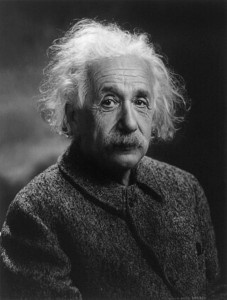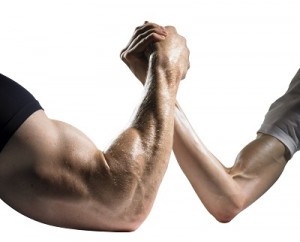How did gravity experiments start?

Galileo was actually one of the first people to do science experiments on gravity using the tallest tower he could find – the Tower of Pisa in Italy. At least, that’s what we’ve been told. But Galileo, who always wrote everything down, never mentioned in his notes of dropping things off the tower. What he did document, however, was rolling things down ramps (also called ‘inclines’). Remember that at this time in history, most people were still answering questions by simply arguing about them instead of doing any scientific studies!
[am4show have=’p8;p9;p11;p38;’ guest_error=’Guest error message’ user_error=’User error message’ ]
Galileo soon figured out that objects could be the same shape and different weights (think of a golf ball and a ping pong ball), and they will still fall the same. It was only how they interacted with the air that caused the fall rate to change. By studying ramps (and not just dropping things), he could measure how long things took to drop using not a stopwatch but a water clock (imagine having a sink that regularly dripped once per second). He quickly learned how to find the acceleration (which older kids are going to do during a few experiments later) and that the higher you dropped the ball, the bigger the impact. But we still don’t know why.
The rest of this article is for advanced students…
[/am4show][am4show have=’p9;p38;’ guest_error=’Guest error message’ user_error=’User error message’ ]
Newton used Galileo’s work along with lots of cool mathematics to figure out that the Moon constantly falling around the Earth. Think of it this way – if you throw a ball toward the sunset, it will fall 16 feet during the first second. If you throw the ball faster and faster, it will still fall 16 feet during the first second. If you shot a bullet horizontally, it will also fall 16 feet during the first second. It doesn’t matter how fast you get that bullet to travel – it will always fall 16 feet during that first second.
What if you could shoot the bullet fast enough so that the rate the Earth curves away from the bullet at the same rate that it falls? If you shoot the bullet at 5 miles per second, it will fall at the same rate that the Earth is curving away from it… and that’s how we get objects into orbit. And that’s also what scientists mean when they say that ‘the Moon is falling around the Earth’.
Problems with Gravity
 Things with gravity were going along just fine, until we started looking at the planets. It turns out that Mercury’s orbit doesn’t follow the math the way that it should – meaning that scientists can describe the orbits of the planets using complicated math equations… all except for Mercury.
Things with gravity were going along just fine, until we started looking at the planets. It turns out that Mercury’s orbit doesn’t follow the math the way that it should – meaning that scientists can describe the orbits of the planets using complicated math equations… all except for Mercury.
And for a while, scientists actually thought there was another planet between the sun and Mercury that accounted for the trouble they were having (they even named this undiscovered planet Vulcan!). It turned out to be a problem with the math itself, and it took years before Einstein came along and tweaked the equations around so it made more mathematical sense.
Einstein changed the way we see the universe by viewing it from a totally different point of view that gravity is nothing more than geometry (more on that when you get to college!). There are still problems with gravity, though. The math that scientists use to describe gravity breaks down when they try to describe black holes – things go to infinity and zero at the same time, and in math, that’s usually bad news.
One of the things that scientist do know about gravity is that it is not instantaneous. It appears that it does take time for gravity to travel, the same way that it takes time for sound waves to travel to your ears. (Ever notice how you see the lightening before you hear the thunder?) Meaning that if you swapped our sun for a tiny star (with much less gravitational pull), the Earth would not know about it for about 8 minutes. The best guess we have is that gravity propagates at the speed of light.
Is gravity strong?
 Another thing that we know is that gravity is the weakest of the four fundamental forces on small scales (we’re talking about the size of atoms here). On large scales, however, it’s the force that keeps the planets in orbit, galaxies in orbit, and everything slinging around each other as they should. Think about when you stick a magnet to the fridge: the magnetic forces are keeping the magnet up (well, most of the time anyway!) and overcoming the gravitational field effects from the planet.
Another thing that we know is that gravity is the weakest of the four fundamental forces on small scales (we’re talking about the size of atoms here). On large scales, however, it’s the force that keeps the planets in orbit, galaxies in orbit, and everything slinging around each other as they should. Think about when you stick a magnet to the fridge: the magnetic forces are keeping the magnet up (well, most of the time anyway!) and overcoming the gravitational field effects from the planet.
Here’s an interesting thought experiment I came across not too long ago: if you could construct a human body that held together by only gravity, it would take a single breath to shatter the entire body. That’s how weak gravity is on a small scale. On a large scale, though the strong forces that keep the atoms together get so weak that gravity can take over. When you get to scales larger than an atom, the forces that bind the nucleus together get suddenly weaker.
Scientists are really bothered that they cannot figure out the how and why gravity works. They suspect that there are these little particles (gravitons) that shuttle information back and forth about gravity, but they are still invisible to us.
For advanced students, we have a more advanced version of the topic in the form of a textbook download. These files are also in PDF form and include exercises in addition to solid physics content. Note that these downloads are written for upper level science students, so if math isn’t your focus right now, just skip over it and read on. (You’ll find these also posted in the main reading section for each lesson.) Here’s the textbook download for gravity: Gravity Lesson textbook download.
Click here to get started with the experiments!
[/am4show]

For a 4 year old, give them a bag of oranges (maybe with just a couple of oranges) and have them spin the oranges around with them as they spin in a circle. They should feel a pull from the oranges (ask them to spin faster and slower and see if that changes the pull at all), and you can explain that the force they feel is due to the oranges moving in a circle. If they let go of the bag as they are spinning, where do the oranges go? Flying!
So their grip on the oranges is like the gravity of the Sun keeping the planets in their orbits. If the sun suddenly disappeared, the planets would go flying out into space, just like the oranges did.
Does that help?
My 4 year old wants to ask what is it that makes the planets stay in their place?
THIS IS REALLY COOL IT HELPED ME UNDERSTAND GALIEO’S GRAVITY ALOT MORE
That’s funny. So gravity is even weaker than a sneeze. 😉
Things have to be planet-sized before you notice the attractive pull between two objects, so no, you wouldn’t notice in deep space. But if you sneezed, you would move in the opposite direction. 🙂
I know I saw this question asked somewhere on here, but now I can’t find it. My son asked if the gravitational field of humans is strong enough to cause them to move towards one another while in space. I told him no because, for one thing, there are lots of other larger objects with stronger gravitational pulls. (don’t know if thats the correct way to word it) But I wondered, if in a theoretical world where only 2 humans existed, and there was no air resistance or friction, would they move towards one another? Or is it still too small to detect?
This is a common question folks have. Here’s the deal: Gravity accelerates all things equally, which means all things speed up the same amount as they fall. Here’s where the difference comes in: gravity does pull on things differently. Gravity is pulling greater on objects that weigh more, which is why you weigh more than a ping pong ball. Weight is a measure of how much gravity is pulling on an object.
Remember, the force of gravity is experienced differently for different objects, because F=ma (Newton’s Second Law). In our case, gravity is a constant acceleration factor on earth. The distinction between the bowling ball and the feather is due to the different terminal velocities experienced by these objects.
The terminal velocity will be reached much more quickly by the feather, because there is less mass for the air to counteract than for the bowling ball. Therefore, the downward acceleration of the feather will quickly reach zero and it will gently float downward at the same speed. This is not true of the bowling ball, since the downward force exerted by gravity on it will be much greater and it will take longer for it to reach terminal velocity. In this time, the bowling ball will pick up speed that the feather did not, because it did not take as much time to reach zero acceleration.
Does that help? Keep up the great questions!
Aurora
I have always been taught and thought that gravity pulls equally on all objects. Yet in one of your lessons (unit 2 lesson 1)it says that a bowling ball falls faster than a feather because there is less air resistance and more gravitational pull therefore it falls faster. I have always thought that it was only air resistance that slows an objects fall. For instance there is no air resistance on the moon yet there is gravity. If you dropped a bowling bowl and a feather at the same time on the moon they would hit they ground at the same time. If gravity were pulling harder on the bowling ball then wouldn’t it hit the ground first? It confused me when i read it so i was hoping you could answer my question. Thanks!
No, the gravity of a space ship is TINY compared to that of a planet or star…
yes thank you! one more question i just thought up though… if there is a spaceship and the astronots come out , would there be enuff gravity to make them sometimes stick to the ship??
Ok – the muscles in your arm move because of electromagnetic force. The strong and weak have to do with inside the atom itself, so that leaves gravitational and electromagnetic. The Earth’s gravitational field is what keeps you stuck to the surface of the Earth.
Gravitational and Electromagnetic forces are NOT the same thing. Gravitational forces are always attractive (always pulling things toward it). Electromagnetic includes the push-pull pair of forces and keeps things together like the electron and proton, north-south of magnets…
Anything that has mass has gravity (even you!), but you can only measure the gravity of large objects, like planets.
The Earth’s magnetic field comes from a spinning liquid metal core buried deep within, and doesn’t rip the magnets off your fridge as it’s too weak compared to the magnetic force between the fridge magnet and the metal fridge door. You can detect the magnetic field though the experiments in Unit 1 (measuring the Earth’s magnetic pulse is a great experiment to try out).
Does that help?
could you say that gravity is a magnetic thing? everyone has a gravitational field like a magnetic field so that you stick to the earth. and this is off subject- but because the earth has a lot of metal in it do you think that if i put a rare earth magnet on the ground that it would stick even more?
Hmmm… that would have been the time I threw (yes, threw!) a glass into the sink. It was a real glass, not plastic. I was so small I couldn’t reach the counter top, so I chucked it over the rim of the sink. My mom spend an hour with me afterward throwing objects on the floor that did not break so easily…
No, but it would be cool to fly to the moon, wouldn’t it?
I am an astronomer, which means astronauts run out and get the stuff I need (Moon rocks, bits of comets, etc.)
What was your first gravity experiment ?
Are you an astronaut
The K-8 download has all the content from the Reading sections, which cover most of the main ideas. Does that help?
Wishing the main idea section on each lesson was included in the printable version.
Yes, that’s a great video! We included it in the reading area for gravity. 🙂
Here is a cool video made on the moon about gravity: http://www.youtube.com/watch?v=5C5_dOEyAfk